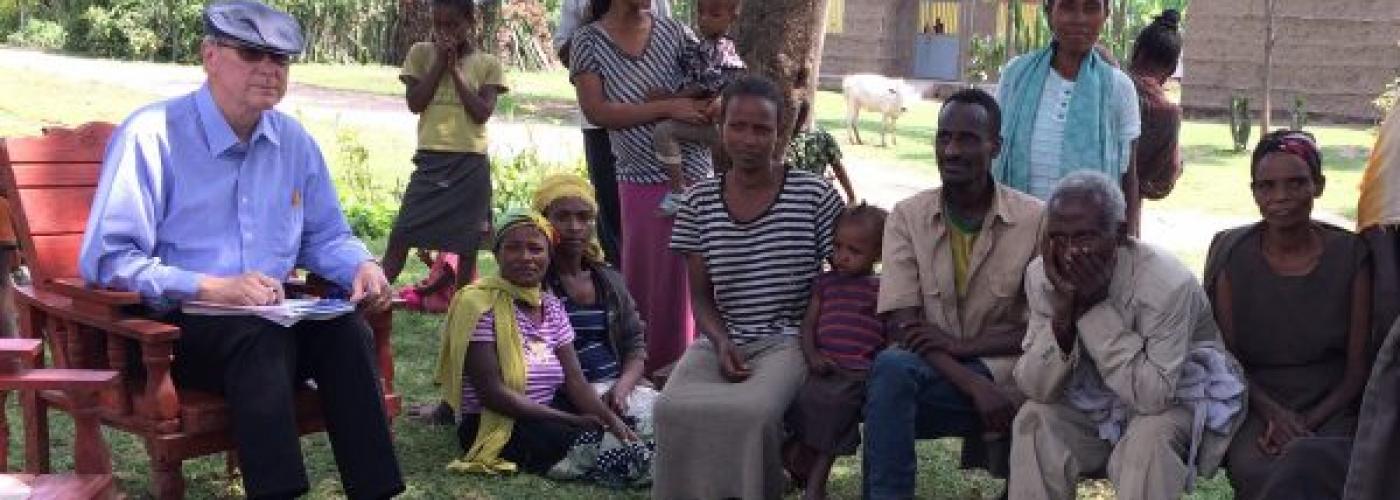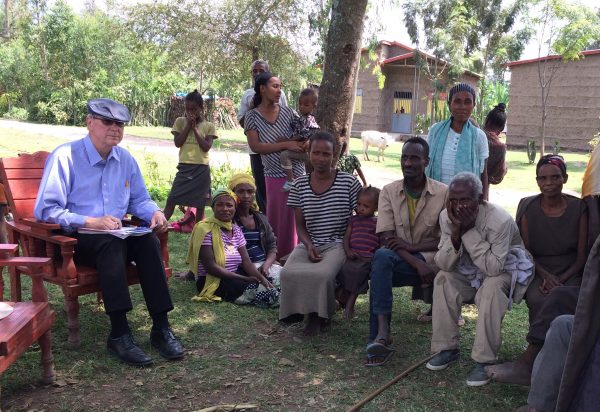Changing Food and Market Systems to Improve Nutrition
Image

This post originally appeared on the SEEP Blog.
I am writing this blog after just having completed a four-day training in Hawassa, Ethiopia of the “Integrating Extremely Poor Producers into Markets Field Guide” or Field Guide with the Strengthening Productive Safety Net Programs and Resilience (SPIR) Development Food Security Activity (DFSA) agriculture and markets staff of CARE, the local NGO ORDA, and World Vision.
More Than an Agro-dealer
As means to practice some of the supplier-producer-buyer tools in the Field Guide, we visited an entrepreneurial agro-dealer. I am convinced, more so than before, of the importance of strengthening input market systems through providing improved seeds and tools closer to farm families living in extreme poverty under the $1.90 per person per day poverty line set by the World Bank.

Photo: Dan Norell from World Vision participates in a focus group discussion with Mr. Otiso, an agro-dealer in Ethiopia. Photo: World Vision.
Mr. Otiso provides inputs to farmers much closer to their homesteads. He says that farmers come from 13 kilometers away to buy from him. He is himself a farmer and provides training to other farmers on proper preparation of the seed bed for different crops as well as proper use of seeds and other inputs.
Mr. Otiso is also a beekeeper. He took a two-month course at a Technical and Vocational and Educational Training Center (TVET) and used his acquired skills to start beekeeping. He rents a shop to sell honey and improved beehives.
It is energizing to meet an entrepreneurial individual who is contributing so much to his local economy. He symbolizes resilience through his diversification of risks, while also strengthening the local input system. The uptake of improved seeds by extremely poor farmers is very low, and making the input market system more inclusive for these farmers is critical to enhancing their access.
The learning objectives of the Field Guide training include:
- Familiarity with value chain development and market systems development
- Understanding of constraints to market participation of extremely poor producers
- Understanding of tools for linking producers to suppliers and buyers
- Understanding of tools to better integrate vulnerable groups such as women into value chains
- Understanding of tools for linking producers to producers
The Field Guide has tools that assess and work to improve commercial relationships that extremely poor producers have with buyers and suppliers and provides guidance on market systems development approaches that enhance nutrition.
The resilience of the families I met as part of the SPIR DFSA market assessment is commendable, especially provided the many shocks they face in their lives.
Learning at #SEEP2017
At the 2017 SEEP Annual Conference, a group of us will be presenting a Peer Learning Session titled, “Changing Food and Market Systems to Improve Nutrition.”
We will be sharing key lessons from the recently published Enterprise Development and Microfinance journal article “Value chain development with the extremely poor: evidence and lessons from CARE, Save the Children, and World Vision.”
Capacity. We will address how development practitioners can facilitate system changes to build farmers’ capacity to better link to suppliers and buyers.
Access. Many farm families are often too far or too poor to have existing input markets reach them with inputs that are profitable for them to purchase. Village agents and other last-mile distribution approaches have been used by development organizations, and Elly Kaganzi from CARE will share on the results of their use of agent approaches in their Pathways Program across six countries.
Productivity and Household Influence. A key driver of improved household nutrition and farm yields is to increase the influence that women have in production decisions on how nutritious the livestock and crops grown are, marketing decisions, and especially the use of the income to improve the nutrition of children and pregnant and lactating mothers. Abraham Muzulu from World Vision Zimbabwe will share results from the ENSURE Food Security Project in this area.
Enabling Environment. Gender issues are often affected by the broader community and national environment. Enhancing women’s influence over nutrition decisions in the household the community attitudes and national policies need to contribute to better nutritional household decision making. Rakesh Katal, the World Vision Bangladesh Chief of Party of the Nobo Jatra (new beginning) food security project in Bangladesh, will share their experience in engaging the government and the private sector to increase income of food insecure households and improve messaging on nutrition from public and private players in the food system.
I would invite you to register for the 2017 SEEP Annual Conference, and attend our session on Changing Food and Market Systems to Improve Nutrition. We’re excited to present on this topic. It is a fascinating topic with a lot of interesting work being done by the projects with which the presenters work.


